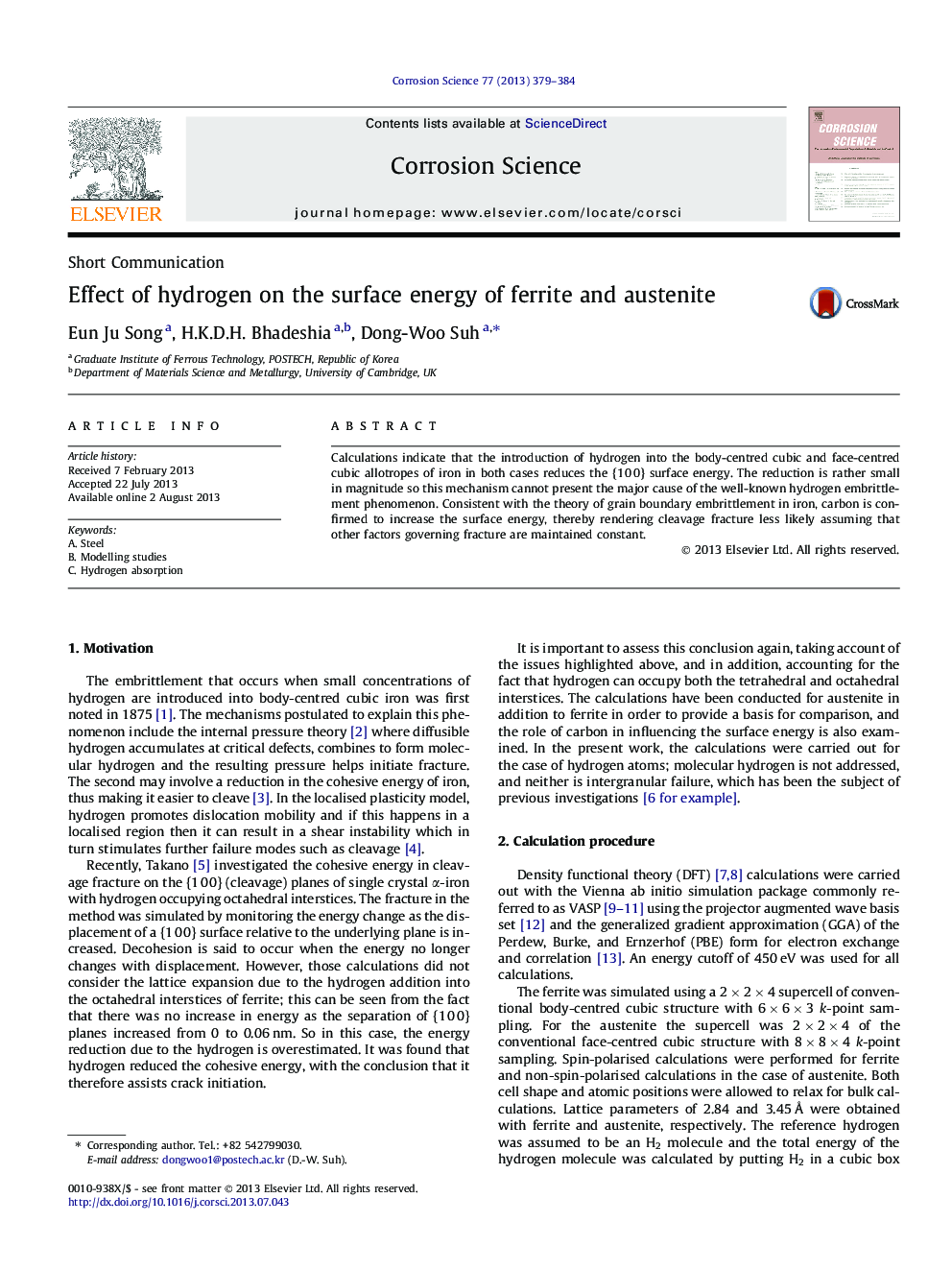| Article ID | Journal | Published Year | Pages | File Type |
|---|---|---|---|---|
| 7896338 | Corrosion Science | 2013 | 6 Pages |
Abstract
Calculations indicate that the introduction of hydrogen into the body-centred cubic and face-centred cubic allotropes of iron in both cases reduces the {1Â 0Â 0} surface energy. The reduction is rather small in magnitude so this mechanism cannot present the major cause of the well-known hydrogen embrittlement phenomenon. Consistent with the theory of grain boundary embrittlement in iron, carbon is confirmed to increase the surface energy, thereby rendering cleavage fracture less likely assuming that other factors governing fracture are maintained constant.
Related Topics
Physical Sciences and Engineering
Materials Science
Ceramics and Composites
Authors
Eun Ju Song, H.K.D.H. Bhadeshia, Dong-Woo Suh,
